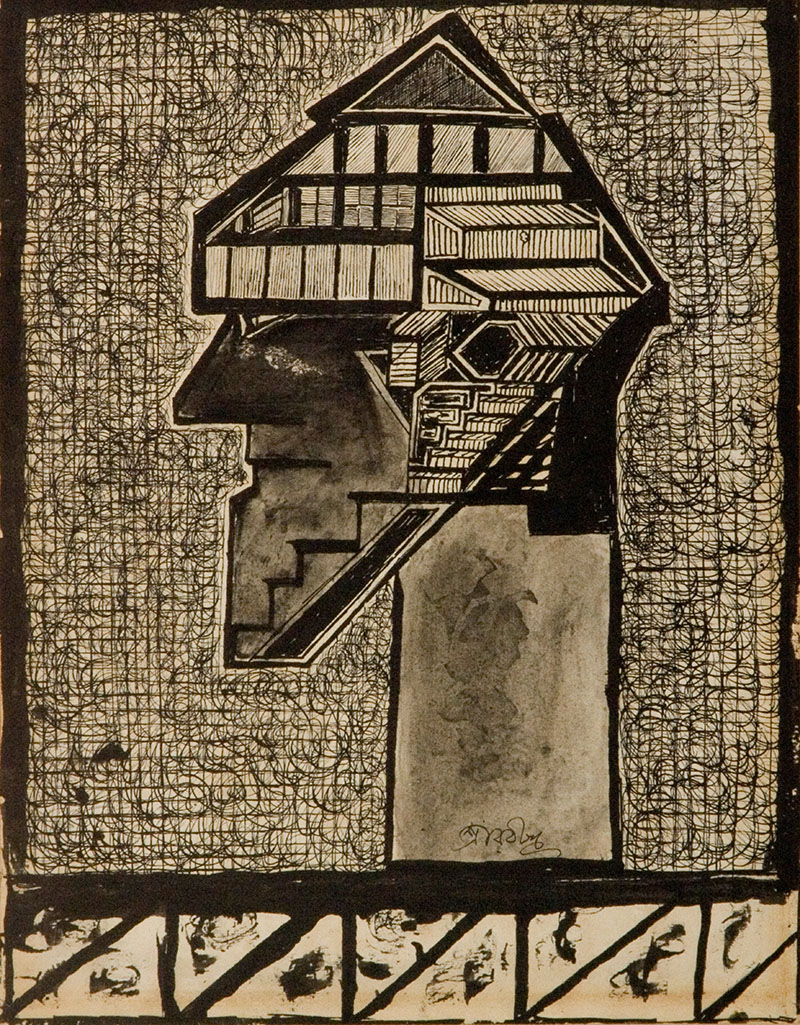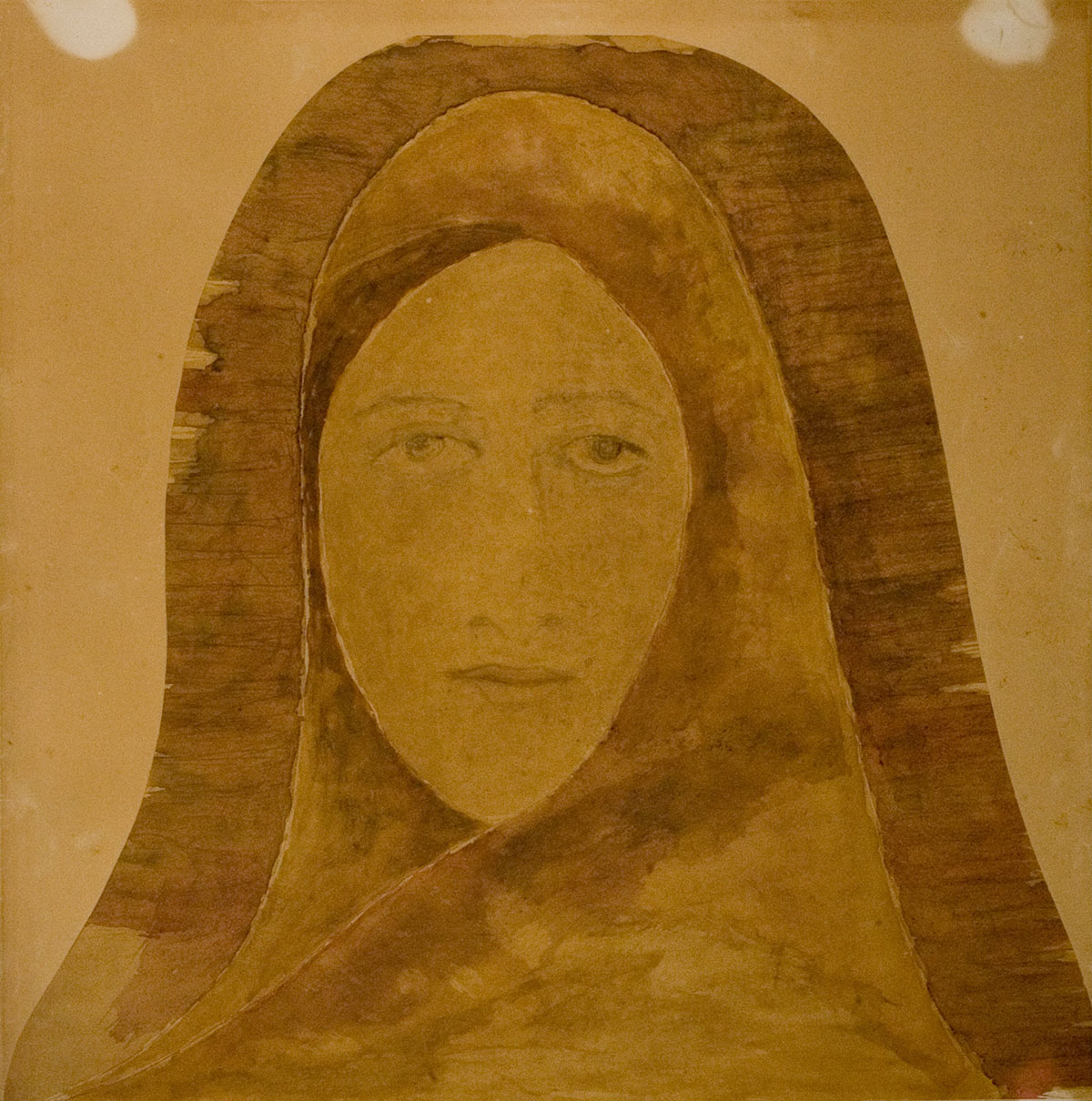ARTICLE
Rabindranath Tagore
Geometric shapes appear regularly in his work, as do giant ovoid faces. A sense of rhythm was central to his style, with themes ranging from faces, masks, natural and zoomorphic figures, human groups, individual figures and landscapes. This rhythmic articulation of lines has led some scholars to see traces of the Art Nouveau style in his work but only as incidental to his more immersive and Expressionist style. The most famous, and perhaps most discussed, of his works features a series of faces that are interpreted as masks. The haunting face of a woman with pensive eyes — a recurring motif in his repertoire — is often interpreted as the looming memory of his intellectual companion and sister-in-law Kadambari, who died by suicide a few months after Tagore’s marriage. His later portraits were known to cause discomfort to viewers, owing to the subjects staring back at them. These portraits had heavily lit foreheads, exaggerated noses and a despondent and dramatic air, shot through with a sense of darkness and pain. Tagore also painted landscapes depicting rural Bengal, inspired by Shantiniketan and his time at the Tagore family estates in erstwhile East Bengal. He also famously never named or dated his paintings in order to free them from the constrictions of identity, specificity, language and chronology in keeping with his universalist philosophy.
After Tagore’s death in 1941, the legacy of his art was preserved and perpetuated through the Kala Bhavana. His art was proclaimed a national treasure in 1972 and was prevented from being exported out of the country, although his work had already come to be found in collections abroad. In 1997, art historian *R Siva Kumar curated the show, Shantiniketan: The Making of a Contextual Modernism for the National Gallery of Modern Art, New Delhi, to celebrate fifty years of Indian independence. Since then Contextual Modernism has become an important framework to examine the work of Tagore and other early Kala Bhavana artists.
Bibliography
Das Gupta, Uma. “In the Pursuit of a Different Freedom: Tagore’s World University at Shantiniketan.” India International Center Quarterly 29, no. ¾ (2003): 25–38.
Inaga, Shigemi. “The Interaction of Bengali and Japanese Artistic Milieus in the First Half of the Twentieth Century (1901-1945): Rabindranath Tagore, Arai Kanpō, and Nandalal Bose.” Japan Review, no. 21 (2009): 149–81.
Sen, Amrit. “Beyond Borders: Rabindranath Tagore’s Paintings and Visva-Bharati.” Rupakatha Journal on Interdisciplinary Studies in Humanities 2, no. 1 (2010): 34–43. https://www.researchgate.net/deref/http%3A%2F%2Fdx.doi.org%2F10.21659%2Frupkatha.v2n1.04.
Siva Kumar, R. Santiniketan: The Making of a Contextual Modernism. New Delhi: National Gallery of Modern Art, 1997. https://www.academia.edu/42665455/Santiniketan_The_making_of_A_Contextual_Modernism_with_Notes.
Victoria and Albert Museum. “Rabindranath Tagore: Poet and Painter.” Accessed September 10, 2020. http://www.vam.ac.uk/content/articles/r/rabindranath-tagore-poet-and-painter/.
Wong, Aida Yuen. “Rabindranath Tagore’s Mysterious Faces and India’s Encounter with Modernism.” In Behind the Masks of Modernism: Global and Transnational Perspectives, 24–54, Florida: University Press of Florida, 2016.








